When writing, precision is important. Especially with words like “copies” and “copys.” For instance, imagine you’re preparing multiple handouts for a meeting. The correct phrase would be, “I need 20 copies of this report,” not “20 copys.”
Understanding the nuances of language can be tricky, especially when it comes to words that look and sound similar. “Copies” and “copys” are a perfect example of this. Although they may seem interchangeable at first glance, there are distinct rules and contexts that dictate their correct usage. This article aims to clarify these differences, providing you with the knowledge to use these words accurately and confidently in your writing.
You might also enjoy:What Kind of Vs What Kinds of – Differences + Examples [2025]
![a infographic about Copys or Copies: Differences + Examples [2025]](https://phoenixenglishlang.com/wp-content/uploads/2023/11/unnamed-19.png)
First, let’s address the basics. The word “copies” is the plural form of “copy.” When you have more than one copy of something, you use “copies.” For example, if you have multiple copies of a book, you will say, “I have three copies of this book.” This usage is straightforward and follows the standard rules of English grammar for forming plurals.
On the other hand, “copys” is not a standard word in the English language. It is a common misspelling or typo that people might make when they intend to write “copies.”
Understanding this distinction is crucial because using “copys” in your writing can undermine your credibility and make your text appear unprofessional. By recognizing that “copys” is incorrect, you can avoid this common mistake and ensure that your writing is polished and accurate.
To further illustrate the correct usage of “copies,” let’s look at some examples. Imagine you are a teacher preparing handouts for your students. You would say, “I need to make 30 copies of this worksheet.”
In this context, “copies” clearly indicates that you require multiple reproductions of the same document. Similarly, if you are discussing a collection of photographs, you might say, “I have several copies of this photo.” In both cases, “copies” correctly conveys the idea of having more than one of something. Understanding these real-world implications and nuances further enhances your command of the English language.
You might also enjoy: Top 100 Commonly Used Verbs That Start With D [2024]
Real-World Implications of Correct Usage
Another important aspect to consider is the context in which these words are used. In professional and academic settings, precise language is essential. Using the correct plural form, “copies,” demonstrates your attention to detail and your command of the English language. This can be particularly important in written communication, where errors can be more noticeable and potentially impact your credibility.
Moreover, understanding the difference between “copys” and “copies” can also help you in editing and proofreading your work. When reviewing your writing, it’s important to check for common errors, including incorrect plural forms. By being aware of the correct usage of “copies,” you can catch and correct mistakes before they make it into your final draft.
In addition to these practical considerations, mastering the correct usage of “copies” can also enhance your overall communication skills. Language is a powerful tool, and using it accurately allows you to express your ideas more clearly and effectively.
Whether you are writing an email, a report, or a creative piece, paying attention to details like the correct plural forms can make a significant difference in how your message is received.
which one is correct Copys or Copies what is the difference between them?
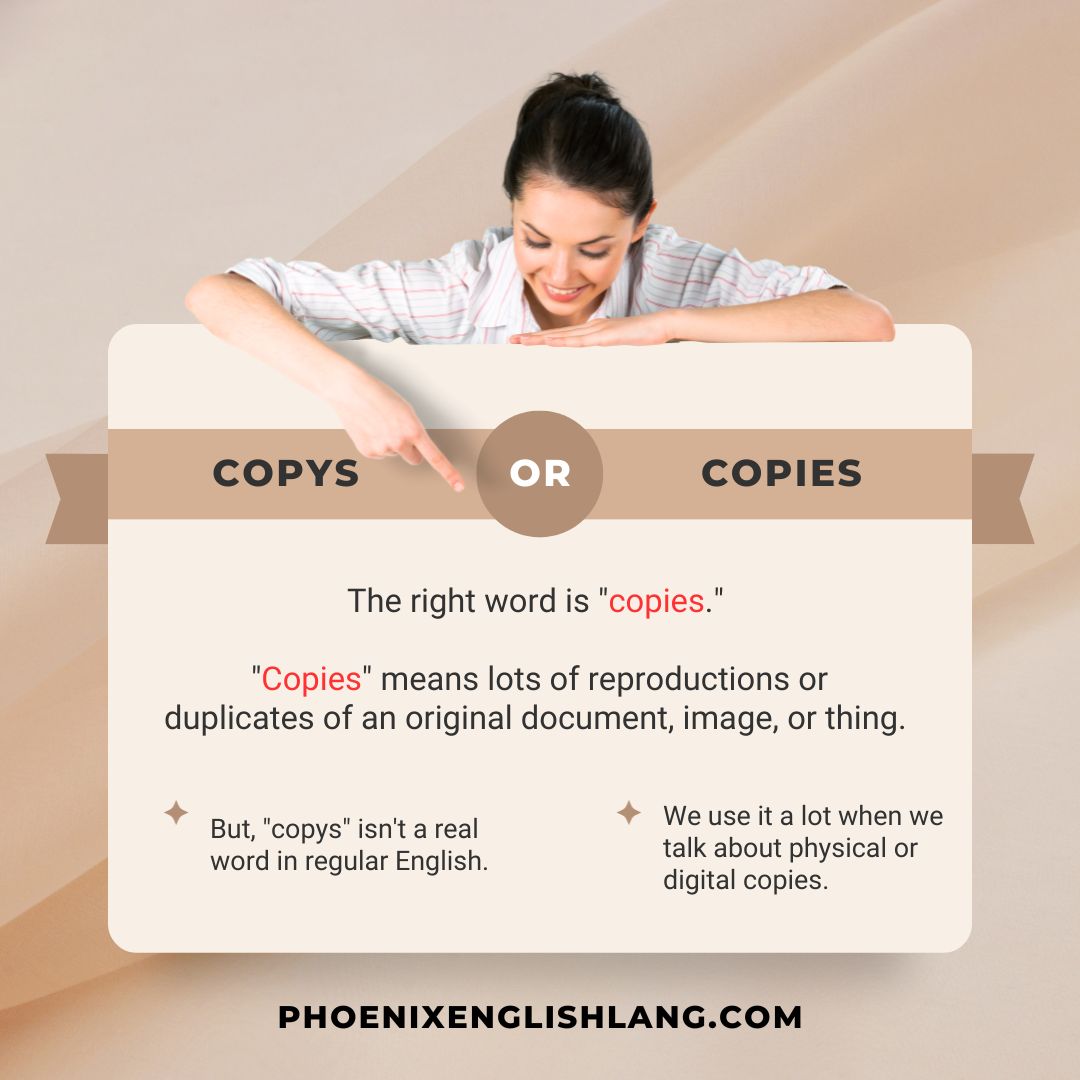
The right word is “copies.” “Copies” means lots of reproductions or duplicates of an original document, image, or thing.
We use it a lot when we talk about physical or digital copies.
But, “copys” isn’t a real word in regular English.
It’s probably just a mistake when someone spells it or types it.
Using “copies” instead of “copys” makes sure we understand each other and don’t get mixed up.
You might also enjoy:Looking Forward To Seeing You: Grammar + Examples[2025]
Common Mistakes of Copys or Copies :
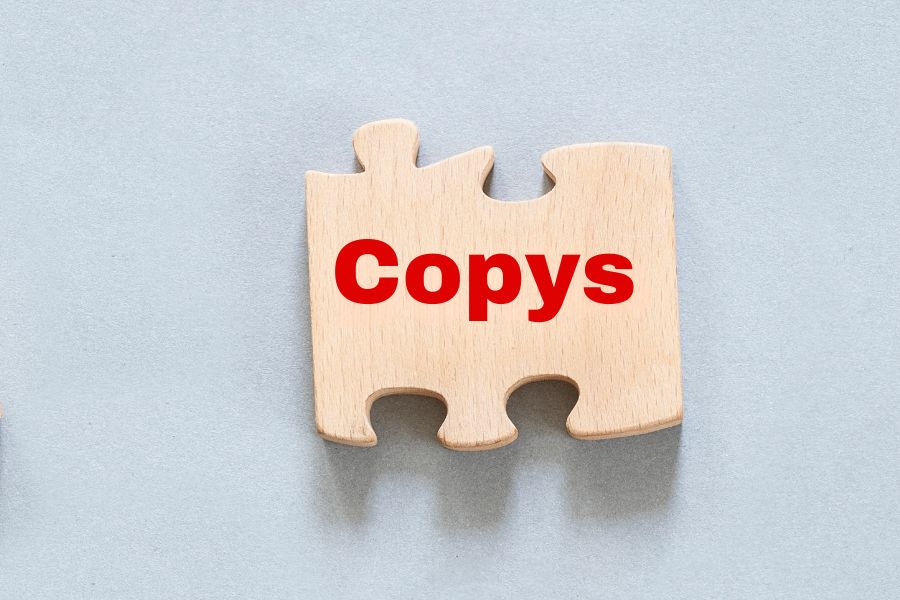
To avoid messing up, it’s super important to remember that “copies” is the right word when you’re talking about more than one reproduction.
If you use “copys” instead, it can get confusing and people might think you made a mistake, especially in fancy writing or professional situations.
When it comes to “copys” or “copies,” there are a bunch of mistakes that people make all the time.
Knowing these mistakes can help you talk clearly and avoid confusion.
Let’s check out some of the common errors that go along with these words. One of the biggest mistakes is using “copys” to mean more than one “copy.”
But here’s the thing, “copys” isn’t a real word in regular English. It’s probably just a spelling mistake or a typo.
Using “copys” instead of “copies” can get confusing and people might think you made a mistake, especially in fancy writing or professional situations.
Another common mistake is when people use “copies” instead of “copy” when they are talking about one thing.
“Copies” means there are multiple reproductions or duplicates of an original document, image, or object.
If you only need one reproduction, make sure to say “copy.” For example, if you say “I need a copy of this document,” that’s right.
But if you say “I need copies of this document,” it means you want more than one reproduction.
Some people also make the mistake of using “copies” as a verb, like saying “She copies the document for distribution.”
But the right verb is “copy,” not “copies.” To talk about duplicating or reproducing something, it’s better to say “She makes copies of the document for distribution.”
To avoid these common mistakes, you gotta pay attention to the context and usage of “copys” or “copies.”
Here are a few tips to help you make sure everything’s accurate:
1. When you’re talking about multiple reproductions or duplicates, use “copies.”
Like, “Please make five copies of this report for each team member.”
2. If you just need one reproduction or duplicate, use “copy.”
For example, “I need a copy of this book for my research.”
3. Be careful with using “copys” because it’s not a recognized word in standard English.
That’s not right – “Please provide me with five copys of the document.” The right way to say it is “Please provide me with five copies of the document.”
If you keep an eye out for these typical mess-ups, you’ll totally amp up your communication game, both in writing and in talking.
Just make sure you use the right word, “copies,” so everyone knows what you mean and there’s no room for confusion.
You might also enjoy:Emersion Vs Immersion: Meaning, Differences, and Examples
Definition and Usage of Copys or Copies:
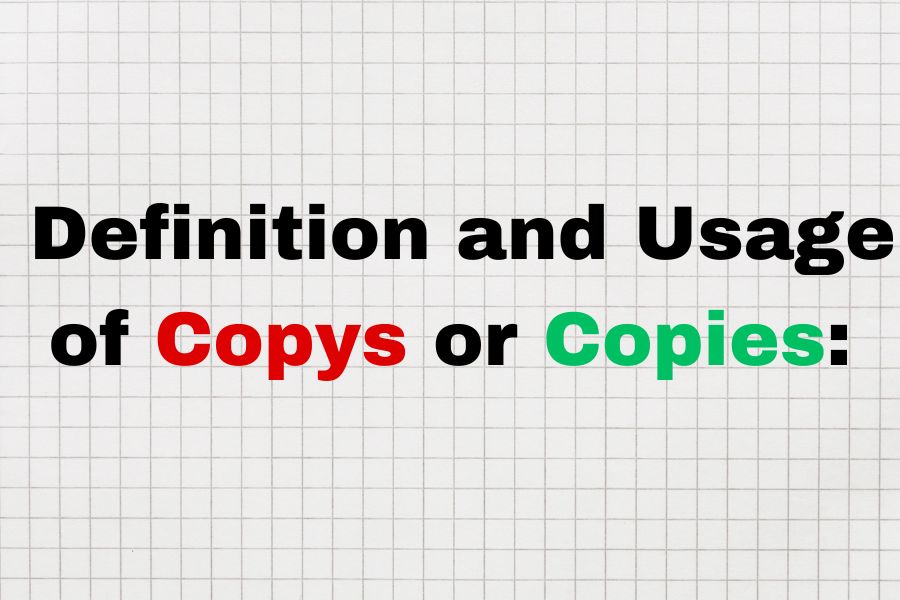
The term “copies” refers to multiple reproductions or duplicates of an original document, image, or item. Whether in physical or digital form, “copies” are used when more than one version of something is needed. For example, if you require several duplicates of a report, you would ask for a few copies that look exactly the same.
Copying has a long history, starting with manual methods and evolving to modern technologies. Physical copies are often produced using photocopiers or printers, which utilize light, heat, and toner or ink to replicate an original document. This process allows for the creation of numerous identical documents with ease.
Copies play a crucial role in various settings such as offices, schools, and different industries where information sharing is essential. In the digital realm, copies can be made in various ways, including scanning physical documents or using software to duplicate digital files. Technological advancements have made it significantly easier to create and share digital copies, revolutionizing industries like publishing and entertainment.
You might also enjoy:Too Cute Meaning Vs To Cute (To Vs Too) + Examples

The use of copies extends beyond documents and images. In the art world, artists often produce limited edition copies of their paintings, photographs, or sculptures. These copies are usually signed and numbered by the artist, enhancing their value and collectability. Similarly, copies of books, music albums, and movies are commonly made for sale and distribution.
When it comes to intellectual property, the act of copying becomes more complex. Copyright laws govern how creative works can be copied and distributed. Unauthorized copying, such as piracy, can result in legal consequences. However, there are instances where making copies is permissible, such as for educational or personal use.
On the other hand, “copys” is not a recognized word in standard English; it is likely a misspelling or typo for “copies.” Using “copys” instead of “copies” can lead to confusion or misunderstandings in written communication. Therefore, it is essential to use the correct term “copies” to convey your message accurately and effectively.
In summary, “copies” are multiple versions or duplicates of an original document, image, or item. They can be either physical or digital and are produced using various methods and technologies. Copies play a vital role in disseminating information, art, and in various industries. Using the correct term “copies” ensures clarity and precision in communication.
You might also enjoy:Looking Forward To Seeing You: Grammar + Examples[2025]
“Copys” as a Noun:
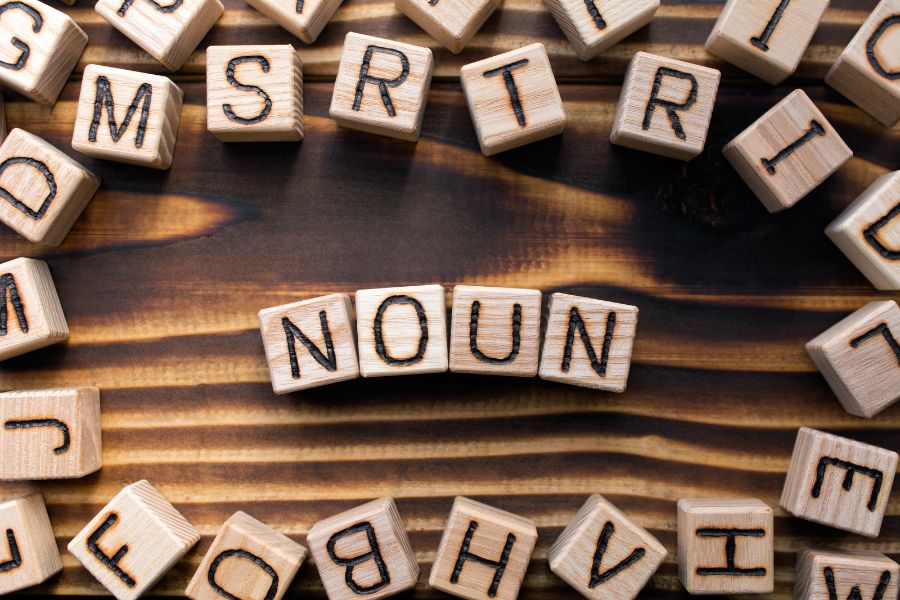
On the other hand, “copys” isn’t even a real word in regular English.
It’s probably just a mistake or a typo for “copies.” Gotta remember that if you use “copys” instead of “copies” in your writing, people might get confused or not understand what you mean.
“Copys” isn’t a real word in regular English when you’re talking about more than one thing.
The right word to use for multiple copies of a document, image, or object is “copies.”
Using “copys” instead of “copies” can lead to confusion or not getting your message across in writing.
When you’re talking about making more than one exact copy of something, you gotta use the right word to make sure everyone knows what you’re talking about.
“Copys” is probably just a mistake or a typo because “copies” and “copys” sound pretty similar when you say them.
But it’s important to know that “copys” isn’t a real word in English.
To avoid confusion and keep things proper, it’s recommended to use “copies” when talking about more than one reproduction.
For example, if you need more than one copy of a report, just ask for a few identical versions.
And if you’re talking about handing out replicated documents or pictures, it’s totally fine to say “copies.”
By using “copies” the right way, you can make sure you’re getting your point across and avoid any misunderstandings.
It’s always a good idea to double-check your writing to make sure you’re using the right terms to say what you mean.
ou Might Also Enjoy: Top 60 Most Common Simple Sentences In English
“Copys” as a Verb:
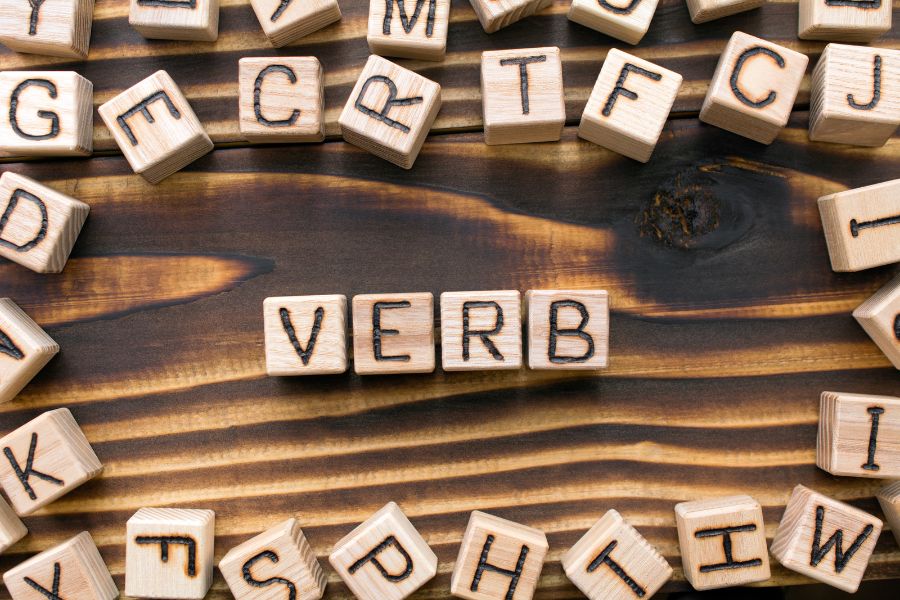
“Copys” ain’t a real noun, but you can use it as a verb sometimes.
Like, it’s the way you say “copy” when you’re talking about someone else doing it.
Like, you could say, “She copys the document to give out.”
But just so you know, this way of using it isn’t as common and might not be considered proper.
“Copys” isn’t a real verb in regular English. It’s probably just a misspelling or not the right way to say “copy.” The right way to say it is “copies,” which means making a copy of something.
When we use “copies” as a verb, it means making lots of copies of a document, picture, or thing.
For example, you can say, “She copies the document for everyone,” which means she’s making many of the same document to give to others.
It’s worth noting that using “copys” as a verb isn’t common in regular English and might be wrong.
It’s always better to use the right form, “copies,” to make sure you’re clear and accurate.
In short, “copies” is the right form of the verb when talking about making copies.
“Copys” isn’t a real verb in regular English and should be avoided to have good grammar and clear communication.
You might also enjoy:How Are You Fairing or Faring? Differences + Examples
Conclusion:
Understanding the difference between “copys” and “copies” is super important for clear and accurate communication. This distinction might seem minor, but it plays a crucial role in ensuring that your message is understood correctly. In both written and spoken language, precision matters, and using the correct terms can significantly impact how your communication is perceived.
“Copies” is the right word when you’re talking about multiple reproductions. Whether you’re referring to copies of a document, book, photograph, or any other item, “copies” is the standard plural form. For example, if you need several duplicates of a report, you would say, “I need five copies of this report.” This usage is straightforward and aligns with the rules of English grammar, making your communication clear and professional.
On the other hand, “copys” isn’t a real word in regular English. It’s a common misspelling or typo that can easily slip into your writing if you’re not careful. Using “copys” instead of “copies” can make your text look unpolished and can confuse your readers. It’s essential to be aware of this error and avoid it to maintain the quality and clarity of your communication.
Just make sure you use the right word to ensure people get what you’re saying, whether it’s in writing or when you’re talking. This attention to detail can make a significant difference in how effectively you convey your message.
In professional settings, using the correct terms demonstrates your command of the language and your attention to detail, which can enhance your credibility and professionalism.
Moreover, understanding the correct usage of “copies” can help you in various practical scenarios. For instance, if you’re in a business meeting and need to distribute multiple copies of a presentation, using the correct term ensures that everyone understands your request.
Similarly, in academic settings, correctly referring to copies of research papers or assignments can prevent misunderstandings and ensure smooth communication.
In addition to practical benefits, mastering the correct usage of “copies” also contributes to your overall language skills. Language is a powerful tool for expressing ideas, and using it accurately allows you to communicate more effectively. By paying attention to details like the correct plural forms, you can enhance your writing and speaking abilities, making your communication more precise and impactful.
Furthermore, being aware of common errors like “copys” can improve your editing and proofreading skills. When reviewing your work, it’s important to check for such mistakes to ensure that your final draft is error-free. This practice not only improves the quality of your writing but also helps you develop a keen eye for detail, which is a valuable skill in any field.
All in all, understanding the difference between “copys” and “copies” is essential for clear and accurate communication. “Copies” is the correct plural form of “copy,” while “copys” is a common misspelling. By using the correct term, you can ensure that your message is understood correctly and maintain the professionalism and clarity of your communication.
This attention to detail can enhance your credibility and effectiveness in both written and spoken language. So, always remember to use “copies” when referring to multiple reproductions, and you’ll be well on your way to mastering this aspect of the English language.

Hi, welcome to my blog! My name is Omid and I am thrilled to have you here! I am an English language teacher with 12 years of experience and hold multiple international certifications (TESOL, IELTS, TOEFL, PTE, CELTA). Additionally, I hold a PhD in Applied Linguistics with a specialization in Teaching English as a Second Language (TESL), which fuels my passion for teaching English and assisting others in mastering the language. To me, nothing is more rewarding than helping individuals enhance their English language abilities through various methods. So, let’s embark on this journey of learning English together.




